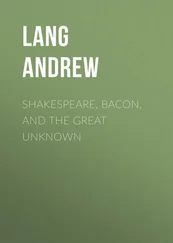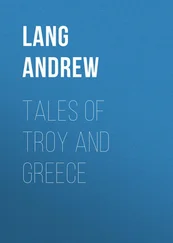Andrew Lang - Cock Lane and Common-Sense
Здесь есть возможность читать онлайн «Andrew Lang - Cock Lane and Common-Sense» — ознакомительный отрывок электронной книги совершенно бесплатно, а после прочтения отрывка купить полную версию. В некоторых случаях можно слушать аудио, скачать через торрент в формате fb2 и присутствует краткое содержание. Жанр: foreign_antique, foreign_prose, на английском языке. Описание произведения, (предисловие) а так же отзывы посетителей доступны на портале библиотеки ЛибКат.
- Название:Cock Lane and Common-Sense
- Автор:
- Жанр:
- Год:неизвестен
- ISBN:нет данных
- Рейтинг книги:4 / 5. Голосов: 1
-
Избранное:Добавить в избранное
- Отзывы:
-
Ваша оценка:
- 80
- 1
- 2
- 3
- 4
- 5
Cock Lane and Common-Sense: краткое содержание, описание и аннотация
Предлагаем к чтению аннотацию, описание, краткое содержание или предисловие (зависит от того, что написал сам автор книги «Cock Lane and Common-Sense»). Если вы не нашли необходимую информацию о книге — напишите в комментариях, мы постараемся отыскать её.
Cock Lane and Common-Sense — читать онлайн ознакомительный отрывок
Ниже представлен текст книги, разбитый по страницам. Система сохранения места последней прочитанной страницы, позволяет с удобством читать онлайн бесплатно книгу «Cock Lane and Common-Sense», без необходимости каждый раз заново искать на чём Вы остановились. Поставьте закладку, и сможете в любой момент перейти на страницу, на которой закончили чтение.
Интервал:
Закладка:
In addition to the evidence of Porphyry, Iamblichus, Eusebius and other authors of the fourth century, some recently published papyri of the same period throw a little light on the late Greek thaumaturgy. 49 49 Greek Papyri in the British Museum; edited by F. G. Kenyon, M.A., London, 1893.
Thus Papyrus cxxv. verso (about the fifth century) ‘contains elaborate instructions for a magical process, the effect of which is to evoke a goddess, to transform her into the appearance of an old woman, and to bind to her the service of the person using the spell..’
Obviously we would much prefer a spell for turning an old woman into a goddess. The document is headed, yραυς Απολλου Τυανεως υπηρετις, ‘the old serving woman of Apollonius of Tyana,’ and it ends, η πραξις δεδοκιμασται, ‘it is proved by practice’.
You take the head of an ibis, and write certain characters on it in the blood of a black ram, and go to a cross-road, or the sea-shore, or a river-bank at midnight: there you recite gibberish and then see a pretty lady riding a donkey, and she will put off her beauty like a mask and assume the appearance of old age, and will promise to obey you: and so forth.
Here is a ‘constraint put on a god’ as Porphyry complains. Reginald Scot, in his Discovery of Witchcraft (1584), has a very similar spell for alluring an airy sylph, and making her serve and be the mistress of the wizard! There is another papyrus (xlvi.), of the fourth century, with directions for divination by aid of a boy looking into a bowl, says the editor (p. 64). There is a long invocation full of ‘barbarous words,’ like the mediæval nonsense rhymes used in magic. There is a dubious reading, Βαθρου or Βοθρου; it is suggested that the boy is put into a pit, as it seems was occasionally done. 50 50 See notice in Classical Review , February, 1894.
It is clear that a spirit is supposed to show the boy his visions. A spell follows for summoning a visible deity. Then we have a recipe for making a ring which will enable the owner to know the thoughts of men. The god is threatened if he does not serve the magicians. All manner of fumigations, plants, and stones are used in these idiotic ceremonies, and to these Porphyry refers. The papyri do not illustrate the phenomena described by Iamblichus, such as the ‘light,’ levitation, music of unknown origin, the resistance of the medium to fire and sword points, and all the rest of his list of prodigies. Iamblichus probably looked down on the believers in these spells written on papyri with extreme disdain. They are only interesting as folklore, like the rhymes of incantation preserved in Reginald Scot’s Discovery of Witchcraft.
There were other analogies between modern, ancient, and savage spiritualism. The medium was swathed, or tied up, like the Davenport Brothers, like Eskimo and Australian conjurers, like the Highland seer in the bull’s hide. 51 51 See oracles in Eusebius, Praep. Evang ., v. 9. The medium was tied up in some way, he had to be unloosed and raised from the ground. The inspiring agency, in a hurry to be gone, gave directions for the unbinding. παυεο δη προφρων οαρων, αναπαυε δε φωτα ραμνων εκλυων πολιον τυπον, ηδ απο yυιων Νειλωην οθονην χερσιν στιβαραις απαειρας. The binding of the Highland seer in a bull’s hide is described by Scott in the Lady of the Lake . A modern Highland seer has ensconced himself in a boiler! The purpose is to concentrate the ‘force’.
The medium was understood to be a mere instrument like a flute, through which the ‘control,’ the god or spirit, spoke. 52 52 Praep. Evang ., v. 8.
This is still the spiritualistic explanation of automatic speech. Eusebius goes so far as to believe that ‘earthbound spirits’ do speak through the medium, but a much simpler theory is obvious. 53 53 Ibid ., v. 15, 3.
Indeed where automatic performances of any sort – by writing, by the kind of ‘Ouija’ or table pointing to letters, as described by Ammianus Marcellinus (xxix. 29) – or by speaking, are concerned, we have the aid of psychology, and the theory of ‘unconscious cerebration’ to help us. But when we are told the old tales of whirring noises, of ‘bilocation,’ of ‘levitation,’ of a mystic light, we are in contact with more difficult questions.
In brief, the problem of spiritualism in general presents itself to us thus: in ancient, modern, and savage thaumaturgy there are certain automatic phenomena. The conjurer, priest, or medium acts, or pretends to act, in various ways beyond his normal consciousness. Savages, ancient mystics, and spiritualists ascribe his automatic behaviour to the control of spirits, gods or demons. No such hypothesis is needed.
On the other side, however, are phenomena not automatic, ‘spiritual’ lights, and sounds; interferences with natural laws, as when bodies are lifted in the air, or are elongated, when fire does not fasten on them, and so on. These phenomena, in ancient times, followed on the performance of certain mystic rites. They are now said to occur without the aid of any such rites. Gods and spirits are said to cause them, but they are only attained in the presence of certain exceptional persons, mediums, saints, priests, conjurers. Clearly then, not the rites, but the peculiar constitution of these individuals is the cause (setting imposture aside) of the phenomena, of the hallucinations, of the impressions, or whatever they are to be styled. That is to say, witnesses, in other matters credible, aver that they receive these peculiar impressions in the society of certain persons and not in that of people in general. Now these impressions are, everywhere, in every age and stage of civilisation, essentially identical. Is it stretching probability almost beyond what it will bear, to allege that all the phenomena, in the Arctic circle as in Australia, in ancient Alexandria as in modern London, are, always, the result of an imposture modelled on savage ideas of the supernatural?
If so we are reduced to the choice between actual objective facts of unknown origin (frequently counterfeited of course), and the theory, – which really comes to much the same thing, – of identical and collective hallucinations in given conditions. On either hypothesis the topic is certainly not without interest for the student of human nature. Even if we could, at most, establish the fact that people like Iamblichus, Mr. Crookes, Lord Crawford, Jesuits in Canada, professional conjurers in Zululand, Spaniards in early Peru, Australian blacks, Maoris, Eskimo, cardinals, ambassadors, are similarly hallucinated, as they declare, in the presence of priests, diviners, Home, Zulu magicians, Biraarks, Jossakeeds, angakut , tohungas , and saints, and Mr. Stainton Moses, still the identity of the false impressions is a topic for psychological study. Or, if we disbelieve this cloud of witnesses, if they voluntarily fabled, we ask, why do they all fable in exactly the same fashion? Even setting aside the animistic hypothesis, the subject is full of curious neglected problems.
Once more, if we admit the theory of intentional imposture by saints, angakut , Zulu medicine-men, mediums, and the rest, we must grant that a trick which takes in a professional conjurer, like Mr. Kellar, is a trick well worthy of examination. How did his Zulu learn the method of Home, of the Egyptian diviners, of St. Joseph of Cupertino? 54 54 Dr. Hodgson, in Proceedings S. P. R ., Jan., 1894, makes Mr. Kellar’s evidence as to Indian ‘levitation’ seem far from convincing! As a professional conjurer, and exposer of spiritualistic imposture, Mr. Kellar has made statements about his own experiences which are not easily to be harmonised.
Each solution has its difficulties, while practical investigation is rarely possible. We have no Home with us, at present, and the opportunity of studying his effects carefully was neglected. It was equally desirable to study them whether he caused collective hallucinations, or whether his effects were merely those of ordinary, though skilful, conjuring. For Home, whatever his moral character may have been, was a remarkable survival of a class of men familiar to the mystic Iamblichus, to the savage races of the past and present, and (as far as his marvels went) to the biographers of the saints. ‘I am one of those,’ says the Zulu medicine-man, in Mr. Rider Haggard’s Allan’s Wife , ‘who can make men see what they do not see.’ The class of persons who are said to have possessed this power appear, now and then, in all human history, and have at least bequeathed to us a puzzle in anthropology. This problem has recently been presented, in what may be called an acute form, by the publication of the ‘Experiences of Mr. Stainton Moses’. 55 55 Proceedings S. P. R . Jan., 1894.
Mr. Moses was a clergyman and schoolmaster; in both capacities he appears to have been industrious, conscientious, and honourable. He was not devoid of literature, and had contributed, it is said, to periodicals as remote from mysticism as Punch , and the Saturday Review . He was a sportsman, at least he was a disciple of our father, Izaak Walton. ‘Most anglers are quiet men, and followers of peace, so simply wise as not to sell their consciences to buy riches, and with them vexation, and a fear to die,’ says Izaak.
Интервал:
Закладка:
Похожие книги на «Cock Lane and Common-Sense»
Представляем Вашему вниманию похожие книги на «Cock Lane and Common-Sense» списком для выбора. Мы отобрали схожую по названию и смыслу литературу в надежде предоставить читателям больше вариантов отыскать новые, интересные, ещё непрочитанные произведения.
Обсуждение, отзывы о книге «Cock Lane and Common-Sense» и просто собственные мнения читателей. Оставьте ваши комментарии, напишите, что Вы думаете о произведении, его смысле или главных героях. Укажите что конкретно понравилось, а что нет, и почему Вы так считаете.
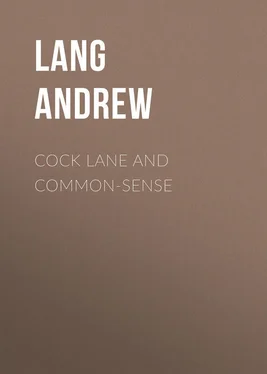

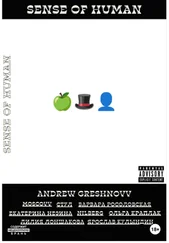




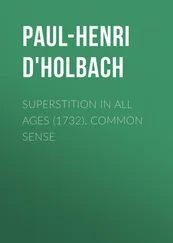
![Andrew Lang - XXXII Ballades in Blue China [1885]](/books/745214/andrew-lang-xxxii-ballades-in-blue-china-1885-thumb.webp)
